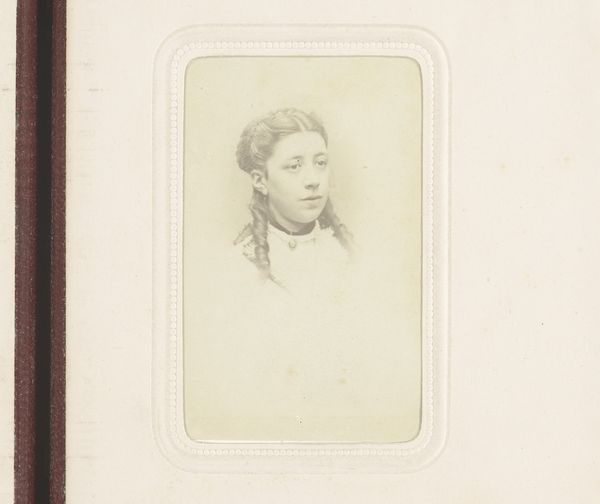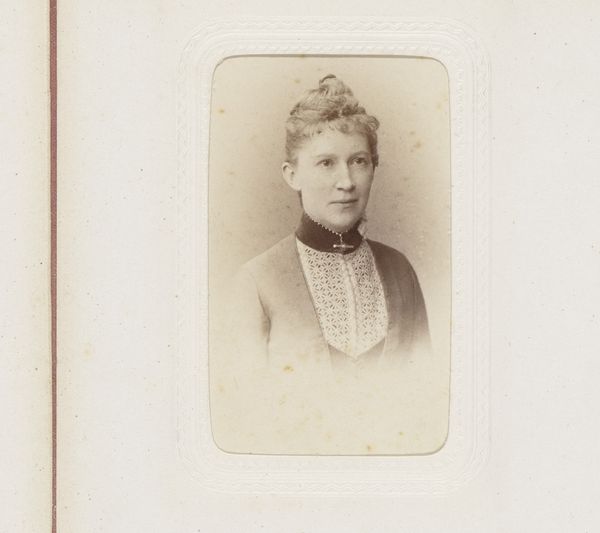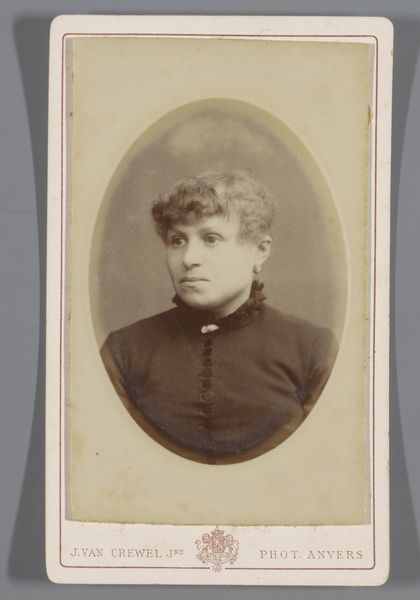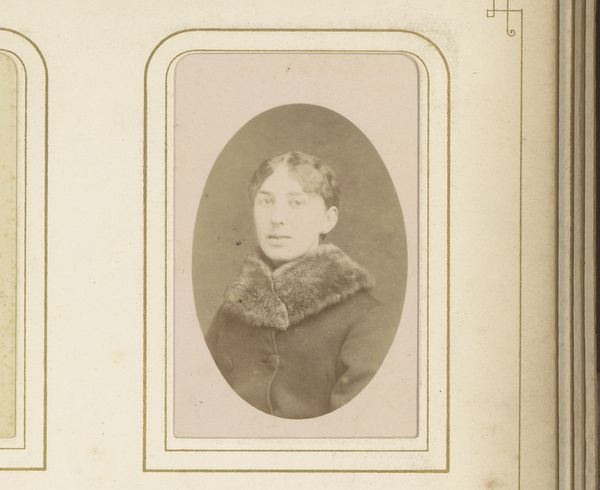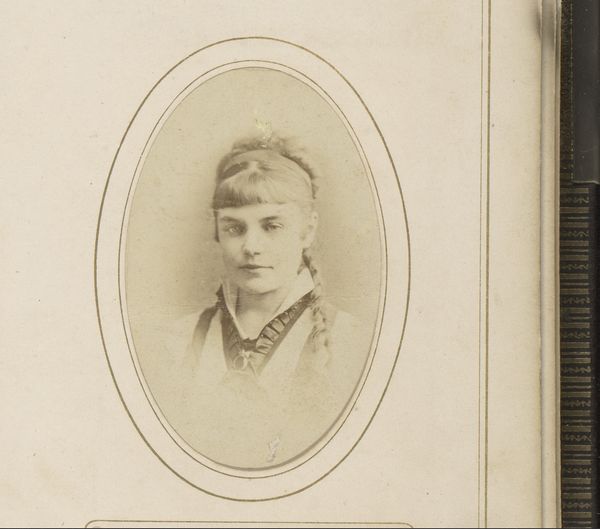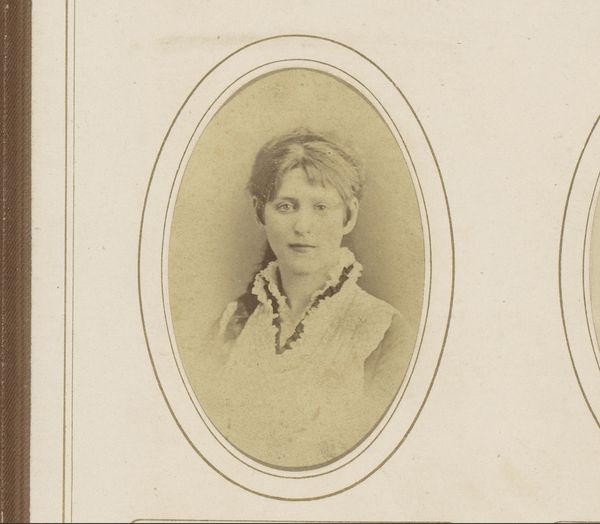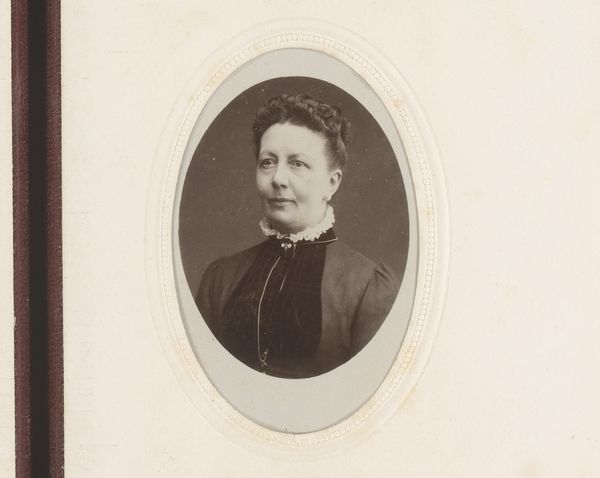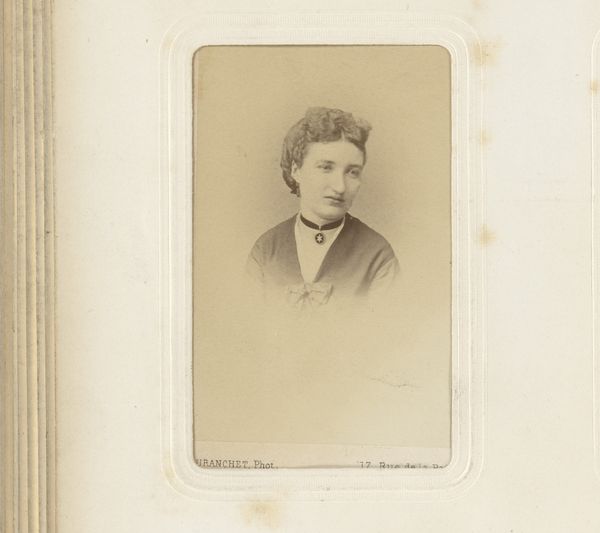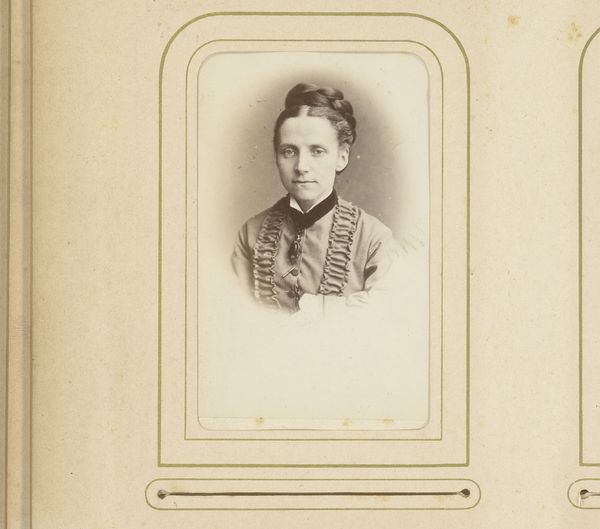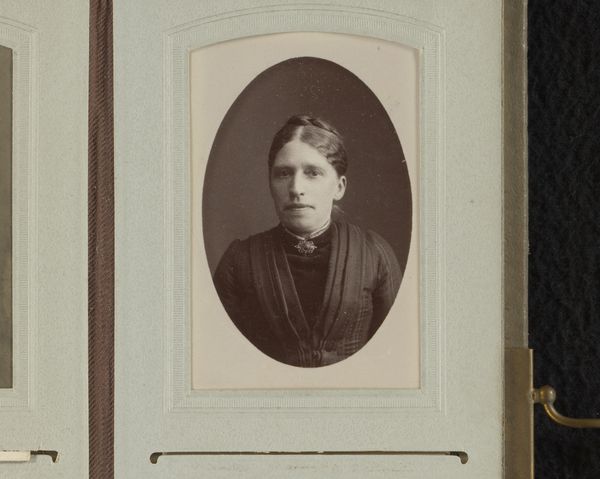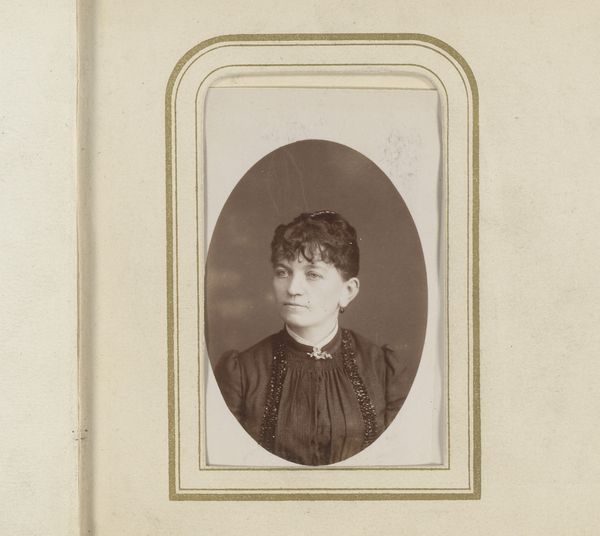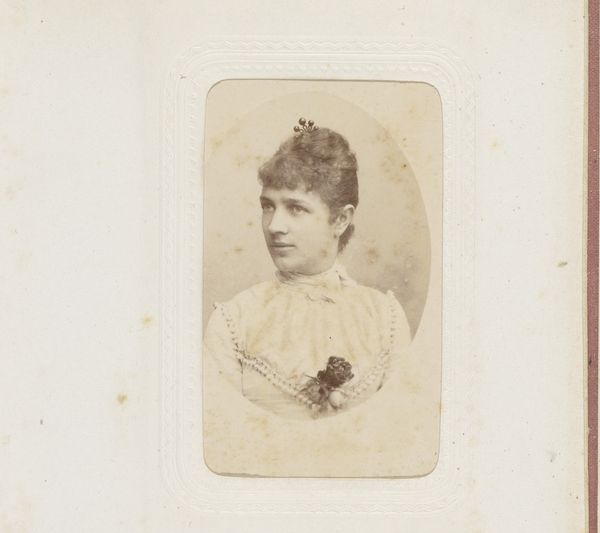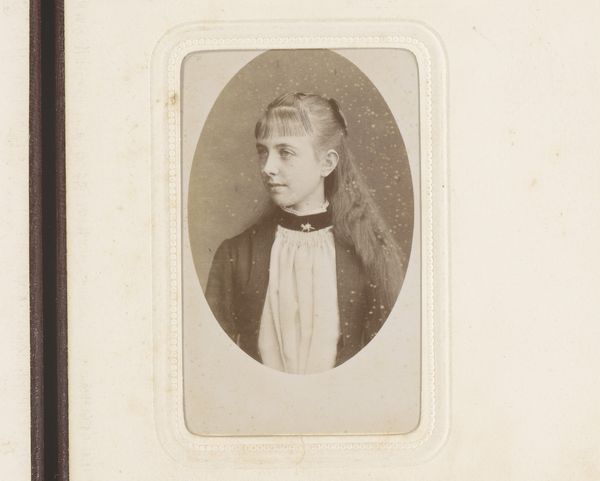
photography
#
photography
#
19th century
Dimensions: height 80 mm, width 52 mm
Copyright: Rijks Museum: Open Domain
Editor: We are looking at "Portret van een vrouw, aangeduid als Marie" by Coenraad Cornelis Roskam, sometime between 1870 and 1892. It's a photograph, and what strikes me immediately is the framing – it looks like part of a larger album page. What can you tell me about it? Curator: Let's start with the material reality of this image. It is a photograph, likely an albumen print given the period. Consider the social implications here: photography, although becoming more accessible, was still a relatively novel and expensive medium during that era. Editor: Right, so having a portrait taken indicated a certain social standing, didn't it? Curator: Precisely. But beyond that, consider the labor involved. Not only the photographer's skill and time, but also the process of preparing the chemicals, coating the glass plates, the darkroom work. This wasn't a simple point-and-shoot. It was a very material process. What does her clothing suggest? Editor: Her dark, simple clothing, compared to other ornate portraits of the era, seems to hint at perhaps a more austere, perhaps even working-class, background. Or is it carefully chosen for the setting? Curator: Exactly. Notice the tension, and how even the smallest detail – the brooch, the buttoned dress – tells a story about labor, the economics of the photograph, the choices someone makes within very circumscribed boundaries. It’s not just representation; it’s production, exchange, and the consumption of image-making, embedded in a capitalist structure. It pushes back the notions of “high art”. Editor: So, by understanding the production process, it sounds like we are in turn understanding more about who she was and what her social standing was. Curator: Absolutely! We avoid merely interpreting her likeness but are investigating the socioeconomic environment that allowed that image to materialize, thereby understanding more the subject's and maker’s contributions to 19th-century photographic material culture. Editor: Thanks; looking through this perspective helps consider these older photos as part of an economic reality, not just beautiful portraits.
Comments
No comments
Be the first to comment and join the conversation on the ultimate creative platform.
